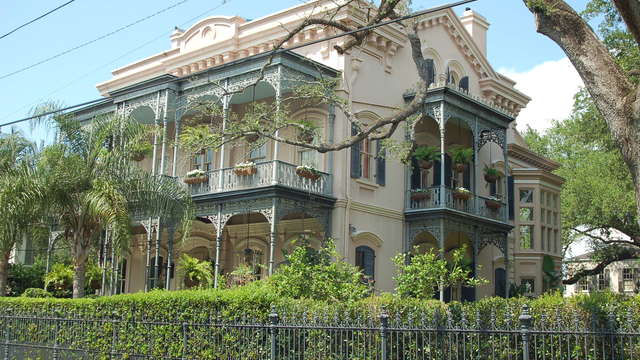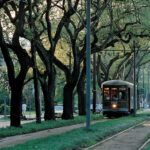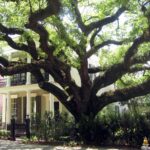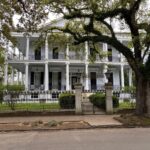Garden District Flora
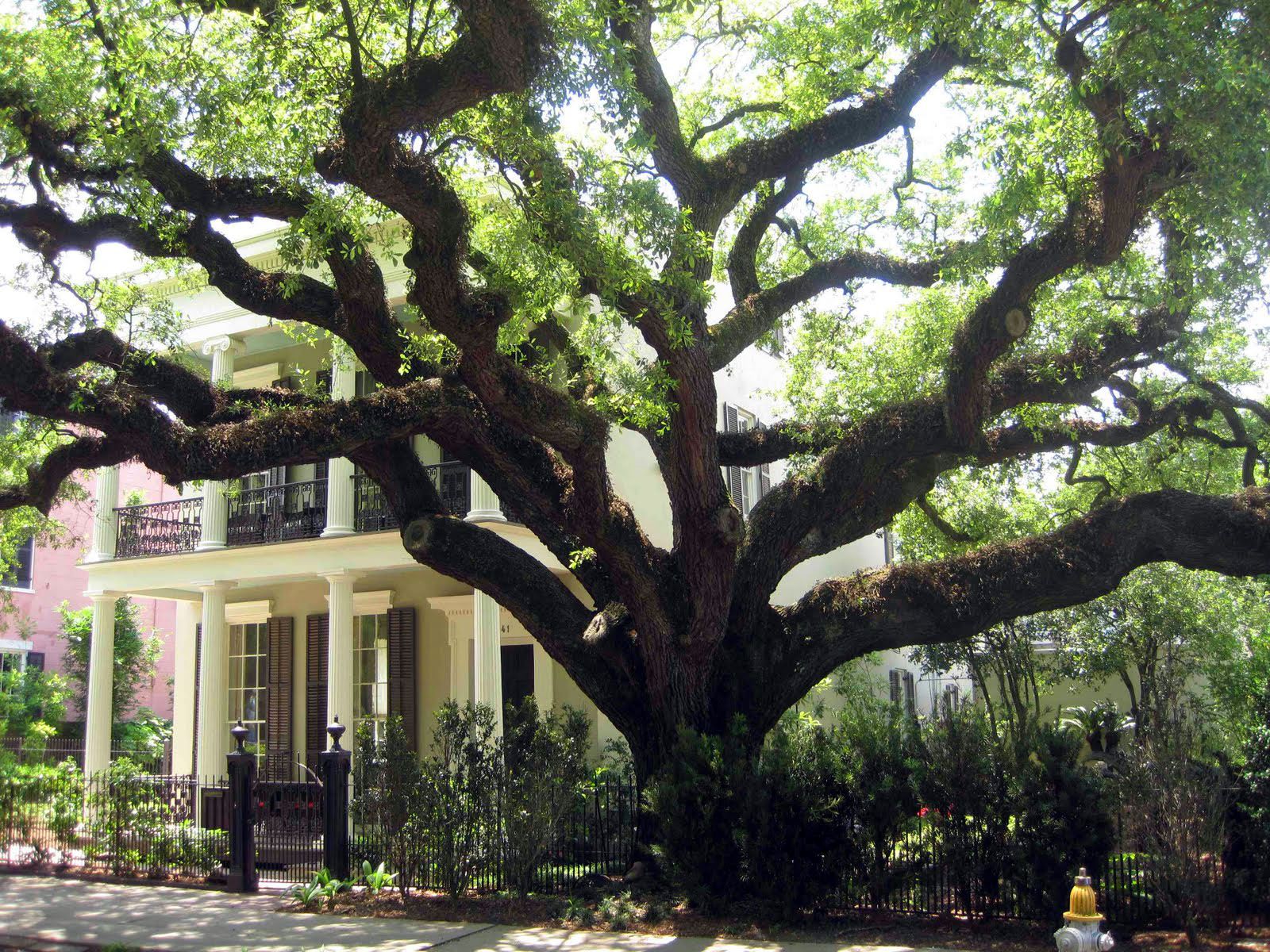
It’s called the Garden District, but which plants are actually in the gardens? The mix of native plants and imports really depends on the actual property owner’s preference, but there are some favorites. This is a very incomplete survey of the different flowers, bushes and trees that comprise the loveliness of the neighborhood.
Mikko Macchione
Tour Guide with Unique NOLA Tours and Author of books about New Orleans.
Most obvious are the trees and the big four are Live Oaks, Magnolias, Cypress and Crape Myrtles. The oaks, which create fabulous green canopies over the streets, are virtually hurricane proof as they spread their roots across the damp soil. They’re called “Live” because they stay green year round. Magnolias bloom in April and provide that lemony perfume affirming Spring has arrived. Cypress trees are conifers that lose their needles in the winter – see have an oak that’s evergreen and an evergreen that’s not. Finally, Crape Myrtles love the hot humid climate here and give us lovely blooms in the worst of the summer.
Many gardens alternate Vinca in the hot months and Petunias in the cooler months. It’s fun to tease our northern guests on Garden District walking tours about what their winter flower is. More and more homes grow Podocarpus or Plum Pine as border walls. They grow tall and straight and make for an excellent privacy wall that is natural.
Every now and then you can see a magnificent Bougainvillea, which does remarkably well in our wet climate. Now, growing on the bark of the Live Oaks, you might see Resurrection Fern. This weird little fern curls up brown and looks dead, until the rain comes and it unrolls into long green sprouts. The trees then look like enormous stuffed animals in emerald fur.
A relative newcomer to area gardens is the so-called Peggy Martin Rose. Martin was an avid gardener whose house sat under 20 feet of salt water for two weeks after Katrina. When the water subsided only this tough rose survived. Not sure what the species was, horticulturists at Texas A&M named it for her. The thornless rose spreads along the tops of fences and blooms like a soft pink comforter.
Finally, you sometimes see Spanish Moss, but that was flung up into the trees by owners. It is not a moss, but an epiphyte or air plant, and they don’t grow where cars go by because of the exhaust. Out in the big parks you’ll see tons hanging down.
This list is way too short – not mentioning Leopard Plants, different types of magnolias, London Plane Trees, Choking Fig or many other specialties. When you come, you can discover even more lovely members that make up the Garden District.

